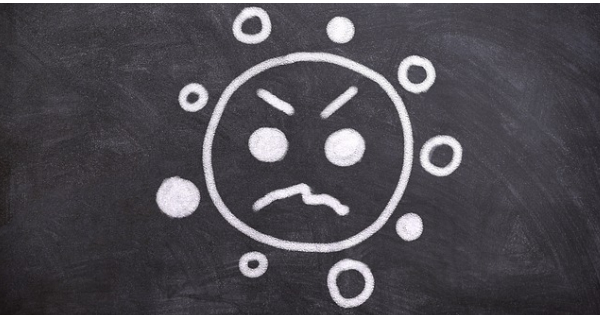Importance of Health Education [Information to live a better life]
To live a better future, change has to start right now. This is why the importance of health education has become paramount for every country in the world. From economic welfare to survival; health education is the best way to lower mortality levels across the globe. It is time we embrace it as a common practice.
Fostering health education is the best way of prevention, and prevention is crucial to living a better, healthier life.
Table of Contents
What is health education?
According to the World Health Organization, health education is “communication designed to improve health literacy”. Its main aim is to increase individual as well as community knowledge about how to live a healthier life. In other words, the idea behind this attempt is to reduce the number of deaths that could be avoided with a healthier lifestyle.
Hypertension, smoking tobacco, malnutrition, sexually-transmitted diseases, a poor diet, overweight and obesity, and physical inactivity are among the most common causes in the world. Together they add up to 27.3 million people a year. The World Health Organization considers these causes to be “preventable” and hence, knowledge could be the perfect way of prevention for them. For example, obesity and hypertension often have biological foundations, but their impact could be reduced with a healthy diet and some regular exercise. Delivering this information on time could be a game-changer for those patients suffering from these conditions saving literally millions of lives every year.
The role of health education is, indeed, paramount.
What is the main purpose of health education?
The main purpose behind health education is to inform people which are the healthy habits they need to adapt to, to live a better, longer, and healthier life. Many chronic diseases that might result in a premature death can be preventable, avoidable, or treatable when discovered on time.
For example, according to the WHO, by 2016 13% of the world´s population was obese. It might not sound like a big number, but translating the percentage to people, we have 965 million people. The entire European continent holds 741.4 million. Health education aims to teach nutrition facts that can make obese people improve their health by eating better. Also, to inform those who have unhealthy eating habits about their potential outcome before they become obese.
Prevention, the key to long-term health
Prevention is acting before it & acutest too late. In health issues, there is a lot to be done before a condition can be severe. Indeed, the best way to ensure a long-term healthy life is to adopt healthy habits to stick to. Smoking tobacco, for example, is the cause of death for 7 million people in the world every year and is also a major factor in some other causes like hypertension and strokes.
Good information about the potential problems of smoking tobacco at a young age could generate the needed awareness to dissuade those who haven´t started yet, and convince smokers who want to quit. Health education is the base of long-term health.
Acting now, thinking of tomorrow
Educating to avoid these habits with real information can preserve the lives of the future generations. A good example is an awareness that has been raised over the past decades regarding red meat, and lack of physical exercise. These efforts could prove to be the key for future generations to live a healthier life.
Indeed, going back to the obesity example, over-eating takes more lives per year than under-eating. This means that those with a choice between eating or not are consuming health-damaging food making it a cultural problem rather than an economic one.
The importance of health education in community scenarios
Although health education needs to address each individual to modify health-damaging habits, the effort should be community-size. This is, partly, because the idiosyncrasy of each community needs to be taken into account before planning the educational effort. For example, healthy eating habits should include organic, local vegetables; these change from one community to the next and can´t be done without locals` input.
Evaluate, plan, target, implement, correct, repeat
Let’s take a look at the method to bring health education to a community.
Evaluate – It is important to get started with hard data about the current scenario. Information such as the most common health problems, water, and food quality, and damaging habits need to be gathered.
Plan – Make a plan to successfully address those specific gaps and needs. For example, in a community with obesity and hypertension as main problems, nutritional advice is a must. On the other hand, a community with tobacco and alcohol-related problems needs a different strategy.
Target – Identify the critical population within the community. Target those who need health education more urgently and then spread the message to the rest.
Implement – The detailed plan needs to be implemented in all the areas of the community (urgent and not urgent).
Evaluate – A second evaluation needs to take place for assessing the true impact of the plan. It is paramount to use the exact same methods as the original evaluation so the data can be consistent when comparing.
Correct – Make corrections over the original plan to maximize results.
Repeat – Since health education is a form of prevention, it needs to be an ongoing task to help current and future generations live a healthier life.

The importance of health education in nursing
Nurses wear many hats. Indeed, nursing is a very important and challenging profession that fits the bill perfectly in health education. For example, school nurses need to put forward the self-care, self-love, and healthy-living message in an environment as challenging as schools.
Moreover, other institutions such as hospitals, local health centers, and community centers (to name a few) need to be consistent with the message and the approach to reach the entire local population. Nurses have a major role in reaching out to the community with prevention strategies rather than expecting patients to come in with an advanced, severe condition.

Conclusion: The world needs health education
The importance of health education grows by the day. Prevention can save the lives of millions. Also, nations spend millions in treating patients with conditions that could have been prevented with minimal investments in prevention.
Although a global plan to foster healthy living should include an effort to end the economic gaps between countries, millions of people could benefit enormously from having better information to make more informed decisions about their habits and health.
Health information could save the lives of millions; it is time to make it happen.






